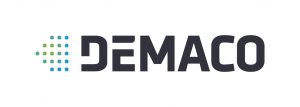ICMC Focused Symposia
Materials, Technologies, and Drivetrain Machines for Electric Propulsion Transportation
Electric-vehicle (EV) or hybrid-electric-vehicle (HEV) propulsion has been developed for almost all major transportation systems, including automobiles, large-scale trucks, trains, military and commercial ships, Formula 1 auto-racing, and others. Electric-propulsion has become a strong focus for the aerospace industry in recent years, in part because of many successful demonstrations of 2-4 passenger aircraft flying > 200 miles with 4-5x higher energy efficiency. For industries like aerospace that are especially sensitive to size-weight-and-power (SWaP), the development of cryogenic electric-power drivetrains is expected to provide significant advantages and system-level benefits. Superconducting/cryogenic technologies have been studied for many years for 0.1 MW to 50 MW-class electric power systems. Many recent strong advances in improving performance and technology development will be described in this symposia.
The 2017 CEC-ICMC conference is providing this focused symposia venue to consider all aspects of cryogenic electric-propulsion technologies, including drivetrain components/machines, cryogenic cooling and ancillary technologies, and system-level-integration issues and impacts. The sessions in this symposia will be of interest for different attendees, including engineers/scientists, system-level developers, and industry-level representatives. Sessions will include special-invited and contributed presentations, and will present a full range of topic of interest: motors and generators, power electronics including energy storage, power transmissions wires and cables, system level integration issues and impacts, and cryocooling systems and ancillary technologies required.
Click here for detailed ICMC Focused Symposia information.
ICMC Focused Sessions
Superconducting Thin Films for SRF and Magnets Applications
Superconducting RF (SRF) cavity performance has approached the theoretical limit for bulk Nb. Similarly state-of-the-art Nb3Sn wires for high field magnet applications have reached their maximum possible critical current density. This session focuses on superconducting thin film technologies which promise considerable savings in fabrication costs, and open the way to the use of innovative superconducting materials with enhanced intrinsic superconducting properties. For SRF applications, the goal is to solve the materials problems that are presently limiting performance in Nb films and in alternate superconducting materials. For high field magnet applications, the goal is to improve further the flux pinning mechanisms of Nb3Sn to reduce the cost of future hadron accelerators. Intensive and coordinated R&D effort within the scientific community is of decisive importance for both these applications. READ MORE.
Cryogenic Microelectronics & Materials
As a result of continued effort in research and development in materials in cryogenic temperature regime, the field of microelectronic device and application has been rapidly growing since the last decade, emerged as one of the major thrust areas along with well matured LTS based technologies in NMR and MRI. CEC/ICMC 2017 will cover some of the most recent development in this field as one of the thematic special topics. This special session of the Cryogenic Microelectronics and Materials is designed to provide a forum for information exchange and discussion on the challenges in materials processing, scaling up design, and manufacturing capability development in applications ranging from biomedical sensors for neural imaging and advanced wide bandwidth electrically small antennas. READ MORE.
Pushing Nb3Sn Conductors Beyond the State of the Art
Nb3Sn superconducting wires have been developed for nearly 50 years, and their record critical current density (Jc) has plateaued for nearly two decades; however, new Jc target significantly beyond the present state of the art has been put forward for the planned future circular proton colliders, and calls for new R&D efforts. This special session answers to this call and is dedicated to discuss prospects for further improving performance of Nb3Sn conductors, recent efforts on “pushing Nb3Sn out of the box”, and particularly, novel approaches that are promising to remarkably improve Nb3Sn performance. READ MORE.
Latest Development in Flux Pinning Highlight
Pinning of quantized magnetic vortices in superconductors enables high critical current densities by orders of magnitudes at applied magnetic fields up to few to tens of Tesla, which are demanded for practical applications, such as large magnets, rotary machines (motors and generators), devices/systems for power grids (cables, fault current limiters, transformers), to name a few. The recent progress in nanoscience and nanotechnology has prompted tremendous success in enhancing pinning force density and efficiency through various novel approaches in terms of generation of artificial pinning centers with precisely controlled dimension, morphology, orientation and concentration. This focus session of the Latest Development in Flux Pinning Highlight intends to provide a platform for updates of the recent progress made and the critical issues still remained, as well as for stimulating fruitful discussions, generating new ideas, and strengthening and/or establishing existing and/or new collaborations in this important field. READ MORE.





